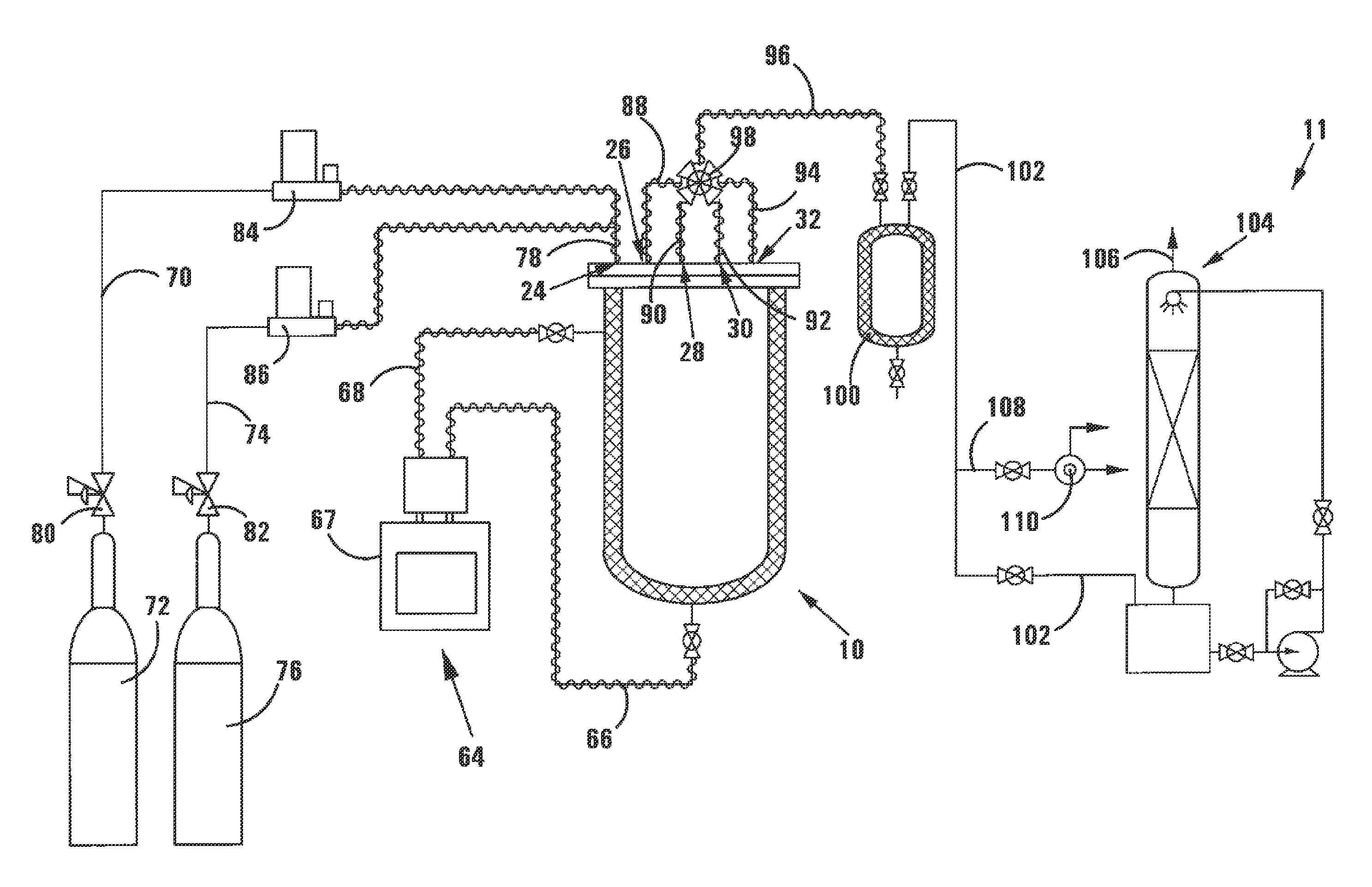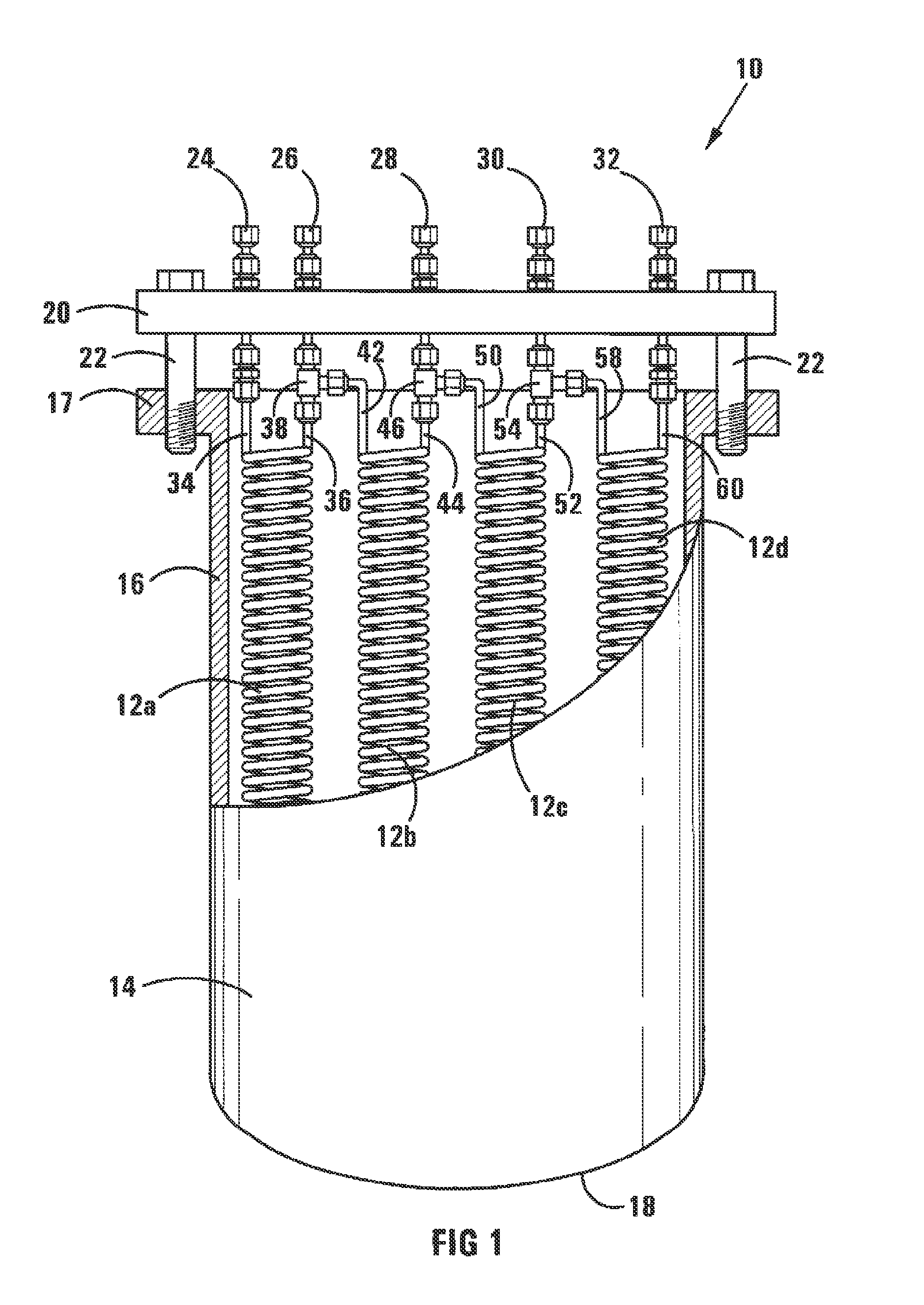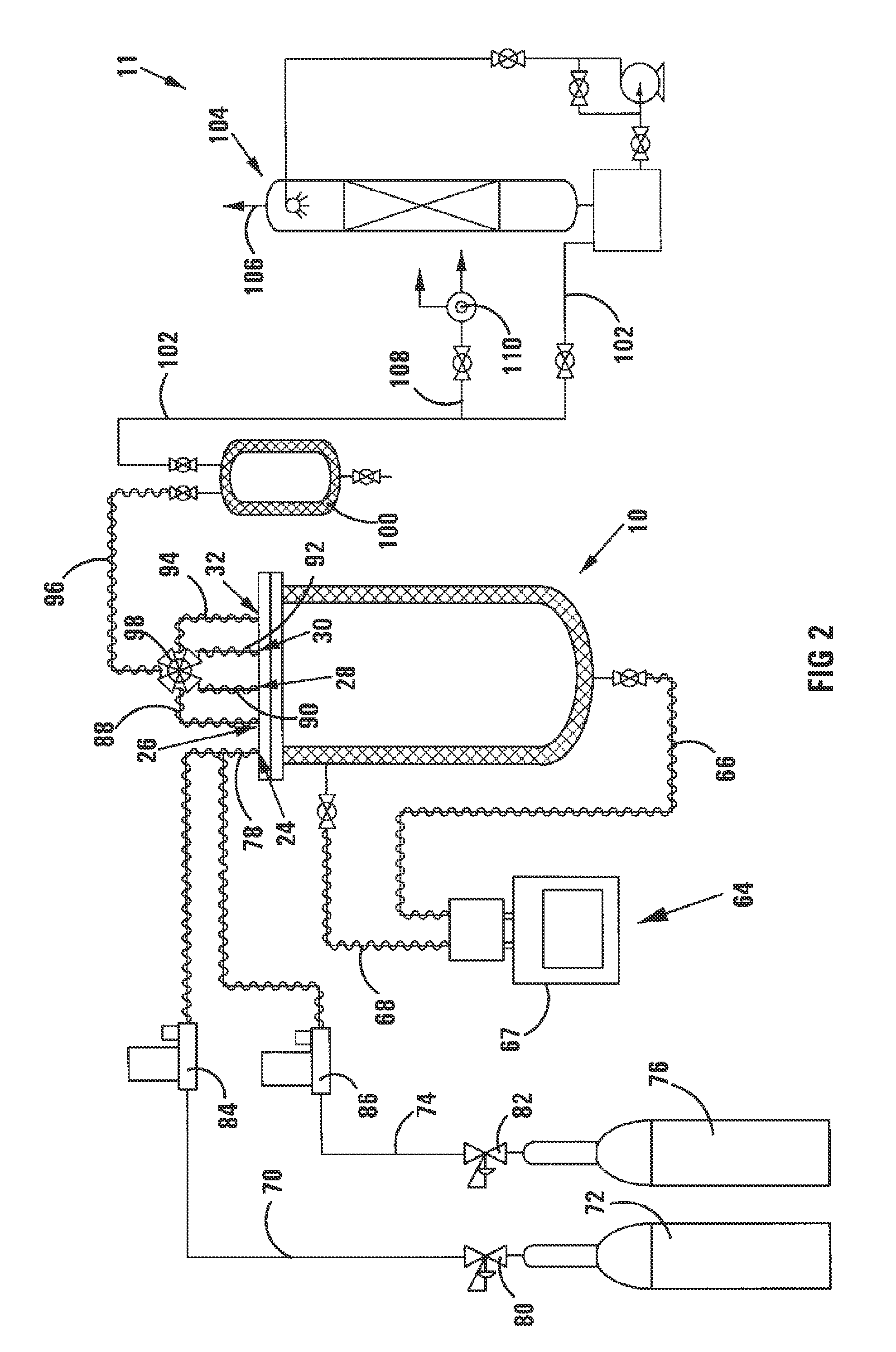Production of hexafluoropropylene oxide
- Summary
- Abstract
- Description
- Claims
- Application Information
AI Technical Summary
Benefits of technology
Problems solved by technology
Method used
Image
Examples
Embodiment Construction
[0042]Referring to FIGS. 1 and 2, reference numeral 10 indicates a reactor in which a process for producing HFPO in accordance with the invention can be carried out. FIG. 2 shows a pilot plant 11 for implementing the process. The reactor 10 comprises a bank of four helical reactor coils 12a, 12b, 12c, 12d and a jacket 14, the reactor coils 12a, 12b, 12c, 12d being located within the jacket 14. The jacket 14 includes a cylindrical wall 16 with a radially outwardly projecting flange 17 at an upper end thereof. The jacket 14 includes a lower dished end 18 which is welded to the wall 16 and a circular top 20 which is secured to the flange 17 by means of six circumferentially spaced M22 bolts 22. FIG. 1 shows the reactor 10 in an open condition, with the top 20 spaced above the flange 17. However, in use, the reactor 10 is closed, with the top 20 adjacent the flange 17, the jacket 14 being sealed. Each reactor coil 12a, 12b, 12c, 12d has a surface-to-volume ratio of 2670 m−1. The reactor...
PUM
 Login to View More
Login to View More Abstract
Description
Claims
Application Information
 Login to View More
Login to View More - R&D
- Intellectual Property
- Life Sciences
- Materials
- Tech Scout
- Unparalleled Data Quality
- Higher Quality Content
- 60% Fewer Hallucinations
Browse by: Latest US Patents, China's latest patents, Technical Efficacy Thesaurus, Application Domain, Technology Topic, Popular Technical Reports.
© 2025 PatSnap. All rights reserved.Legal|Privacy policy|Modern Slavery Act Transparency Statement|Sitemap|About US| Contact US: help@patsnap.com



